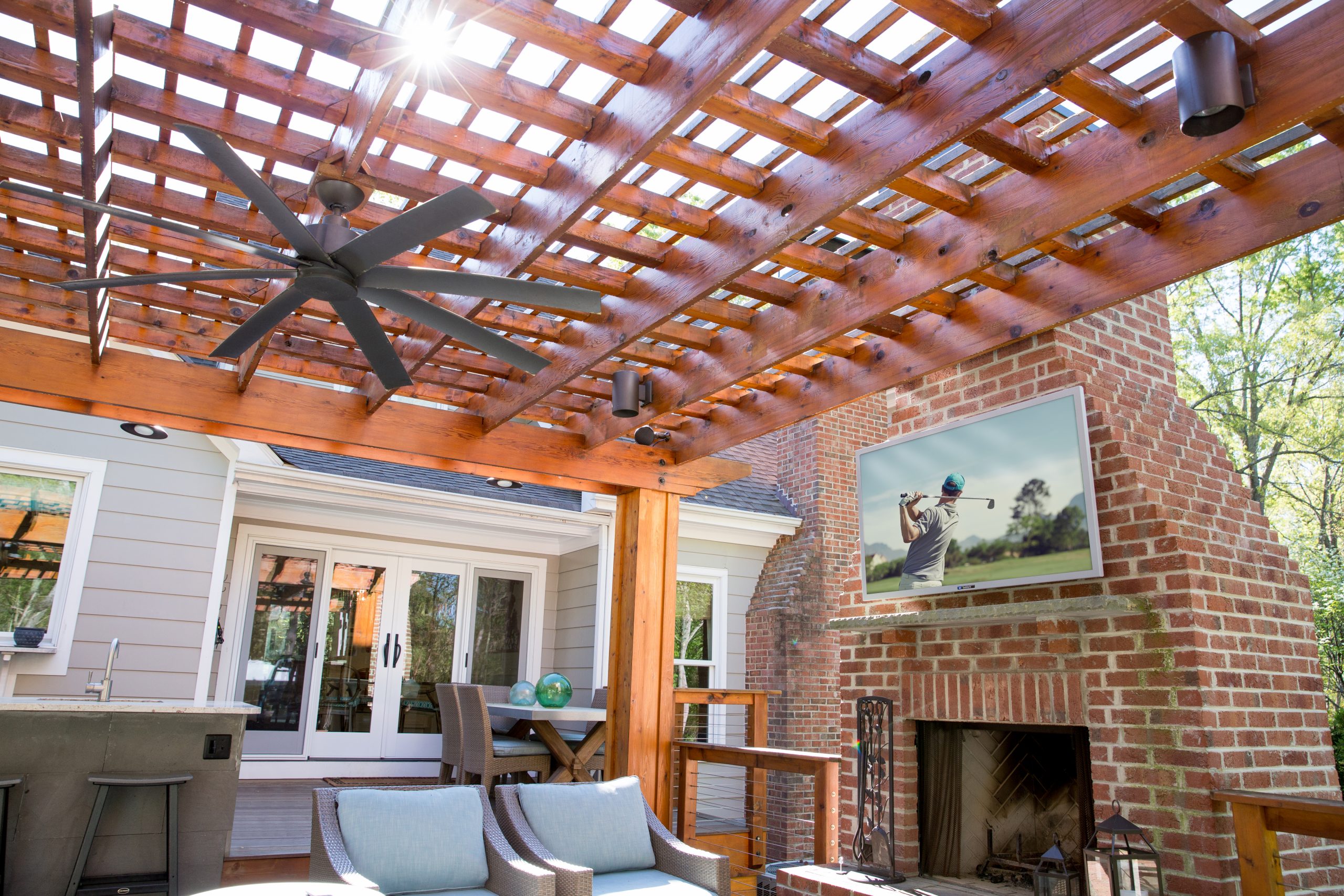Outdoor family living spaces are becoming more and more popular these days and what living space is complete without a television to gather around?
Outdoor living space configurations range from completely open to fully covered or enclosed and any combination in between. Some are close to or adjacent to the main house and others are separate.
When it comes to choosing the right TV for your outdoor living space there are several factors about the space that need to be considered such as exposure to the elements, direction of the sun in relation to the television, location of the cable box and other sources, sound and control methods.
In general, there are two basic ways to go with regards to the actual TV selection. You can either spend thousands of dollars on a true outdoor TV that is enclosed in a weather proof case, generally has a brighter screen and can be left out all year long, or go to the other end of the price spectrum and install the cheapest TV you can find for a few hundred dollars knowing that it may need to be replaced after a season or two if not carefully cared for, and may not be watchable in bright daylight.
The benefits of a true outdoor TV is that you don’t have to worry about it being destroyed by the rain, snow, direct sunlight or a misguided soccer ball. They usually come with an outdoor rated remote control and can be watched in direct sunlight. The downside to this type of TV is of course the price and added weight of the weatherproof case. You can expect to pay roughly $2500 and up for a 50” HD outdoor TV. If you’ll be installing the TV in a location with absolutely no shelter and times of direct sunlight, this would really be the only choice.
Conversely, going the super cheap route with the understanding that by installing an indoor TV outside you are voiding any warranty and you may have to replace the TV if someone forgets to put the cover on it during inclement weather, may be a viable option for partially or better sheltered locations. At around $300 for a cheap 4K 50” you can afford to replace it about 8 times before hitting the price point of a proper outdoor TV. If the TV will not be in direct sunlight and you’ll be doing most of your watching in the early morning, late afternoon or evening, this works well for many situations. You will have to buy a cover for the TV to put on it when not in use, but these are easily sourced and inexpensive.
Once you’ve selected the proper TV for your installation, it’s time to consider what sources you’d like to have and where the devices (cable box, AppleTV, RoKu, Bluray etc) will be kept. Indoors it’s easy to just place the devices under the TV or somewhere in the same room. Outdoors this generally isn’t the case. This means you’ll need to have some additional equipment and wiring installed to get the source signal to the TV location and the remote-control signal back to the components.
This can add several hundred to thousands of dollars to the project so be prepared. There are several HDBaseT devices on the market that can send an HDMI signal from a source device up to 300 feet over Category cable to the TV and bring the remote-control signal from the TV location back to the source components.
Depending on the TV install location, running the cabling and installing the hardware may require additional construction and or excavation to run the cables properly and safely. Electric will also need to be installed at the location.
Sound from the TV is another consideration. Unlike sitting in your living room with walls and a ceiling that reflect and bounce the sound around, in outdoor spaces the sound from the speakers built into the TV often has nothing to reflect off of and therefore may be hard to hear at normal volume levels. Installing an outdoor rated sound bar or tying the TV sound into an existing outdoor speaker system may be necessary to truly enjoy the experience. This again can add at least a few hundred dollars to the overall project cost. We’ve briefly touched on some of the challenges, choices and costs that need to be considered when adding a TV to your outdoor living space. While this can be a DIY project it’s not one for the faint of heart and the potential pitfalls are numerous for those not experienced enough to spot them. In addition, it may require several different contractors including carpenters, masons, electricians and AV specialist to complete.
If you’re thinking of enhancing your outdoor living space with a TV or other entertainment tech, give us a call and we’ll come out and give you a free consultation and estimate.


